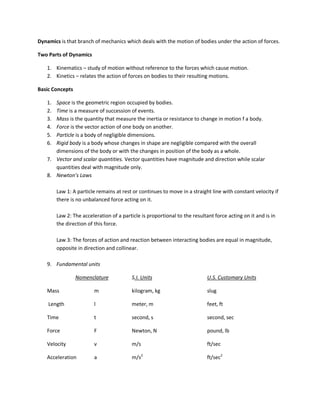Dynamics is the branch of mechanics that deals with the motion of objects under forces. It has two parts: kinematics, which is the study of motion without considering forces, and kinetics, which relates forces to motion. Dynamics uses concepts such as mass, force, velocity, and acceleration. Newton's laws of motion describe how forces affect the motion of objects. Problems are solved by drawing diagrams, identifying knowns and unknowns, selecting an equation, substituting values, and checking that units are consistent and answers are reasonable.

